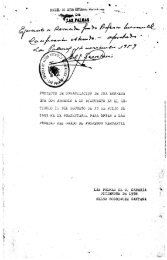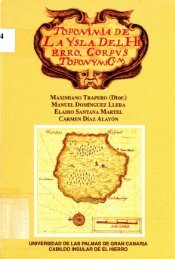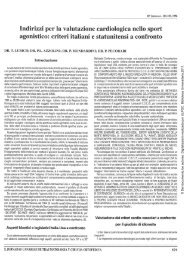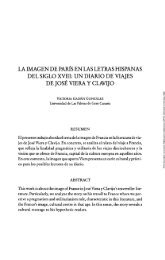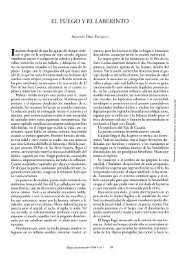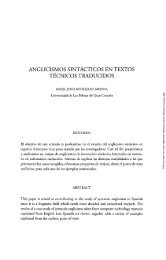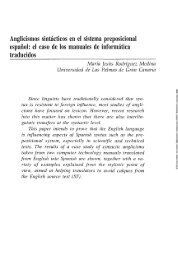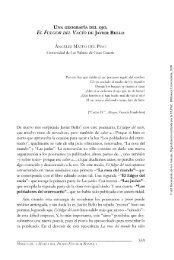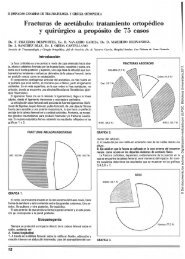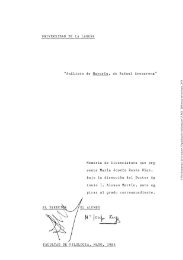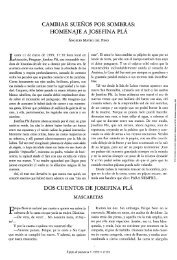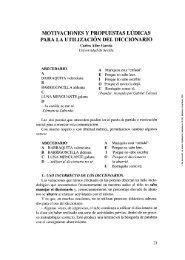Efectos de los ejercicios de Pilates sobre el volumen muscular en la ...
Efectos de los ejercicios de Pilates sobre el volumen muscular en la ...
Efectos de los ejercicios de Pilates sobre el volumen muscular en la ...
Create successful ePaper yourself
Turn your PDF publications into a flip-book with our unique Google optimized e-Paper software.
<strong>de</strong>termined in the curr<strong>en</strong>t investigation, our results are compatible with lev<strong>el</strong>s of activation high<br />
<strong>en</strong>ough to <strong>el</strong>icit muscle hypertrophy.<br />
Paragraph Number 19 Possibly the lower muscle volume ofthe dominant compared to the non<br />
dominant OT observed in healthy wom<strong>en</strong> could exp<strong>la</strong>in si<strong>de</strong>-to-si<strong>de</strong> differ<strong>en</strong>ces in EMG<br />
activation during symmetric movem<strong>en</strong>ts (27). Loss et al (32) analyzed the activity of external<br />
obliques with <strong>el</strong>ectromyography in adult healthy wom<strong>en</strong> (6 months experi<strong>en</strong>ce in <strong>Pi<strong>la</strong>tes</strong><br />
training), during symmetric hip flexion-ext<strong>en</strong>sion movem<strong>en</strong>ts with the knees ext<strong>en</strong><strong>de</strong>d and using<br />
diverse external mechanical overloads with the Cadil<strong>la</strong>c equipm<strong>en</strong>t. The study showed that the<br />
muscle activity of the right external oblique varied to account for the differ<strong>en</strong>t overloads in the<br />
ext<strong>en</strong>sion phase, whilst the left si<strong>de</strong> maintained a simi<strong>la</strong>r activity (32). The asymmetric activation<br />
ofOT could exp<strong>la</strong>in the greater hypertrophy ofthe dominant OT observed in the pres<strong>en</strong>t study.<br />
Paragraph Number 20 It is w<strong>el</strong>l docum<strong>en</strong>ted that abdominal muscles function as an operational<br />
stability system to protect the spine from injury (20, 24, 42). Low back pain is one of the<br />
commonest muscu<strong>los</strong>k<strong>el</strong>etal problems in mo<strong>de</strong>rn society (11). There is sorne evi<strong>de</strong>nce<br />
supporting the effectiv<strong>en</strong>ess of<strong>Pi<strong>la</strong>tes</strong> in the managem<strong>en</strong>t of low back pain (35). The knowledge<br />
of the morphological adaptations induced by differ<strong>en</strong>t training methods is very h<strong>el</strong>pful to <strong>de</strong>sign<br />
more specific training programs for injury prev<strong>en</strong>tion and sports performance. The symmetric<br />
hypertrophy of RA induced by <strong>Pi<strong>la</strong>tes</strong> could h<strong>el</strong>p to increase intra-abdominal pressure and<br />
therefore to prev<strong>en</strong>t low back injuries (24). On the other hand, animal (23) and human studies (5,<br />
21) have provi<strong>de</strong>d evi<strong>de</strong>nce that this mechanism of protection is effective wh<strong>en</strong> its action is<br />
symmetrical betwe<strong>en</strong> si<strong>de</strong>s.<br />
Paragraph 21 Limitations. The number of subjects studied, although <strong>en</strong>ough to show a<br />
significant effect on the RA volume, might have be<strong>en</strong> too small to show more asymmetries in the<br />
Copyright © 2011 by the American College of Sports Medicine. Unauthorized reproduction of this article is prohibited.



